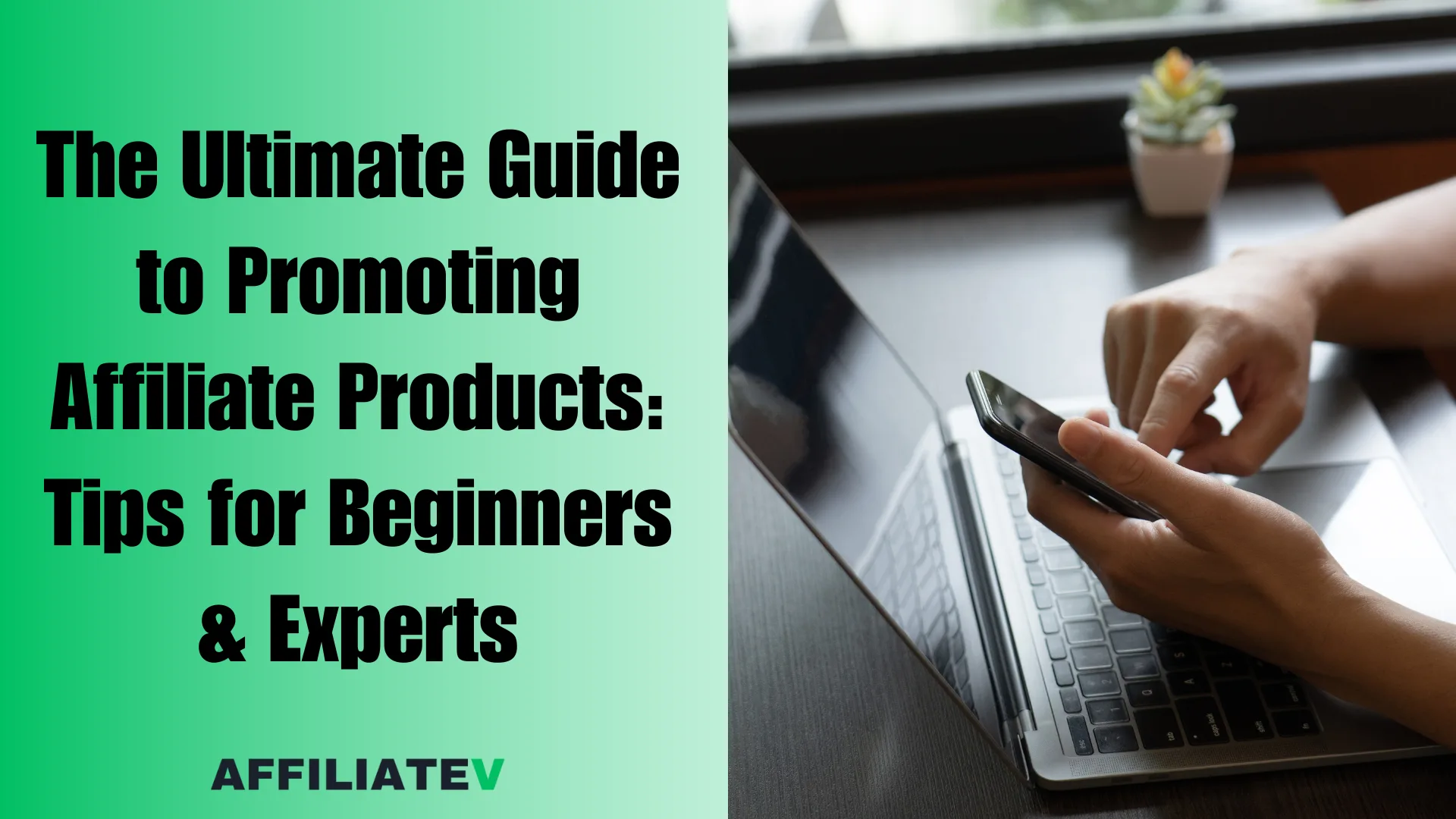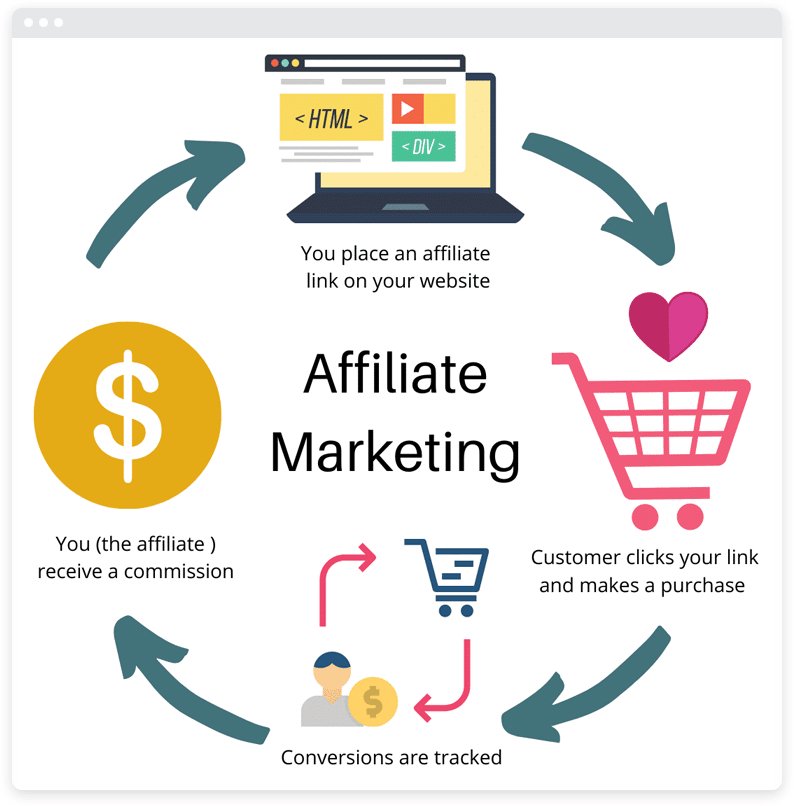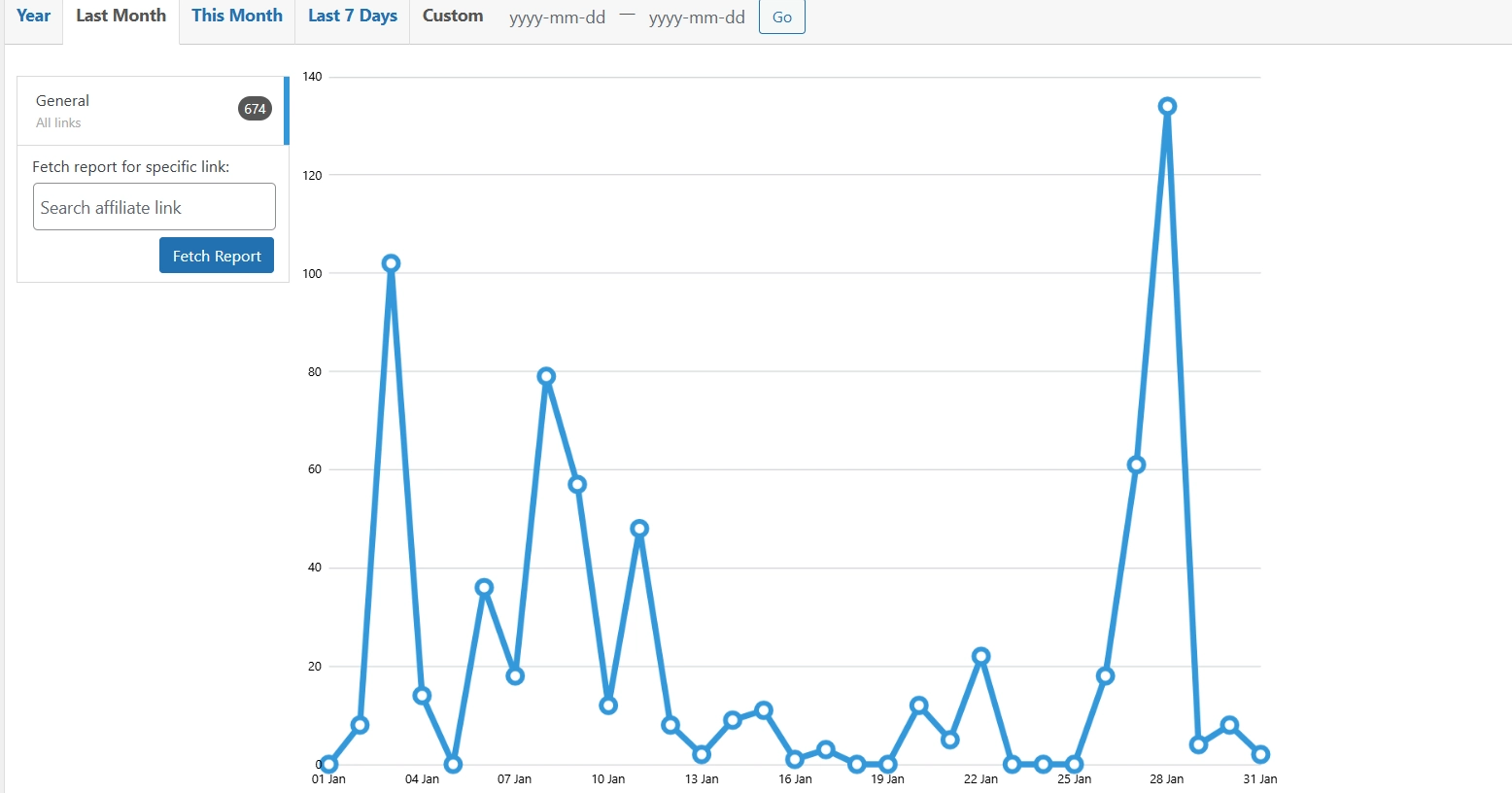The Ultimate Guide to Promoting Affiliate Products: Tips for Beginners & Experts

When I first got into affiliate marketing, I made every mistake in the book. I picked products just because they had high commissions. I posted links everywhere, hoping someone would click. And guess what? Nothing happened.
Dropping links everywhere doesn’t work. Success comes from trust, strategy, and reaching the right audience. People don’t buy just because you share a link—they buy because they trust you and believe in the product.
Over time, I figured out what actually works. Choosing products that fit your audience, promoting them the right way, and building relationships that turn into sales. Once I made that shift, everything changed.
Promoting affiliate products is more than making quick sales. It’s about finding the right audience, offering real value, and using smart promotion strategies. When done right, it creates steady income and a real business.
This guide breaks down proven ways to promote affiliate products that work for both beginners and experienced marketers. Let’s get started.
Key Takeaways
- Promote with trust, not just links. People buy from those they trust. Build credibility first.
- Pick products that fit your audience. Relevance leads to conversions. Don’t chase high commissions blindly.
- Content sells better than spam. Quality posts, reviews, and recommendations work—random links don’t.
- Solve problems, don’t just sell. Show how a product helps instead of just pushing it.
- Consistency beats quick wins. Long-term success comes from steady effort, not one-time promotions.
Understanding Affiliate Marketing
Affiliate marketing is a way to earn commissions by promoting products or services from other companies. You share a unique link, and when someone makes a purchase or takes a specific action through that link, you get paid. It’s a performance-based model, meaning you only earn when results happen.
How It Works
It all starts with joining an affiliate program. Once approved, you get a special tracking link. You promote this link through content like blog posts, social media, videos, or emails.
When someone clicks and completes the required action—whether it’s a sale, a sign-up, or just a click—you earn a commission.

Types of Affiliate Programs
Not all programs operate in the same way. Some pay a percentage of each sale (Pay-Per-Sale), some reward you for generating leads (Pay-Per-Lead), and others pay for every click (Pay-Per-Click). The payout structure depends on the company and the industry.
Knowing how affiliate marketing works helps you make smarter decisions. It’s not just about promoting anything and hoping for results. The right approach can help you build a steady income while providing real value to your audience.
The Right Way to Promote Affiliate Products (and Actually Make Money)
Let’s get started…
1. Choosing the Right Affiliate Products
Picking the right affiliate products is the difference between consistent earnings and wasted effort. It’s not just about high commissions—it’s about promoting products that make sense for your audience.
Aligning Products With Your Niche
If a product doesn’t fit your niche, it won’t sell, it’s very simple as that. People follow you for a reason.
If you talk about fitness, pushing software tools won’t work. Stick to products your audience already wants or needs. The best way to choose? Ask yourself: Would I use this myself? Would I recommend it to a friend? If the answer is no, move on.
Evaluating Commission Rates and Cookie Duration
Not all affiliate programs have the same commission structure. Some offer a small percentage per sale, while others give generous commissions.
A high commission is great, but it’s not everything. Check the cookie duration—this is how long you’ll get credit if someone clicks your link but buys later. A 30-day cookie is better than a 24-hour one, especially for products that require more thought before purchase.
Researching Demand and Credibility
Before promoting anything, make sure there’s a real demand for it. If no one is searching for it or talking about it, you’ll struggle to get sales.
Look at reviews, see if people are already recommending it, and check if the brand is trusted. If a product has bad reviews or shady practices, avoid it. Your reputation matters more than any commission.
I recommend choosing products that align with your audience, offer reasonable commissions, and have real demand. When you do, promoting them becomes much simpler.
Recommended reading: How to Choose the Right Products to Promote as an Affiliate
2. Setting Up a Strong Promotional Strategy
Success in affiliate marketing comes from having a clear plan. One of the best ways to build a lasting income stream is by creating a website or blog.
Unlike social media posts that fade quickly, a website gives you a permanent space to publish content, attract visitors, and promote products over time. It also helps establish credibility, making it easier for people to trust your recommendations.
A. Creating a Website or Blog
A website is one of the most effective tools for affiliate marketing. It allows you to share valuable content, rank on search engines, and create a structured space for product promotions.
While social media and email marketing can drive traffic, they don’t offer the same long-term visibility. A website works for you 24/7, bringing in visitors even when you’re not actively promoting.
To make your site work, focus on user experience. A simple and clean layout keeps visitors engaged, while fast-loading pages prevent them from leaving too soon.
Good content matters, but if your site is difficult to navigate, people won’t stick around. Make it easy for them to find what they need.
How to Optimize Your Site for Conversions
Affiliate links should feel like a natural part of the content, not an obvious sales push. Instead of dropping links randomly, place them where they make sense.
If you’re reviewing a product, include a link right after you explain its benefits. If you’re writing a tutorial, add recommendations where they provide real value.
Clear call-to-actions (CTAs) are essential. If you want visitors to take action, tell them what to do. A simple line like “Try this tool for free” or “Check out my favorite hosting service” gives them direction without sounding pushy. The goal is to help, not force a sale.
Best Content Types for Affiliate Promotions
Some types of content work better than others when it comes to affiliate marketing. Product reviews are one of the most effective formats because people actively search for opinions before making a purchase.
Writing honest, detailed reviews builds trust and makes readers more likely to buy through your link.
Comparison posts are another strong option. Many buyers hesitate between two or more choices, and a direct comparison helps them decide. If you’ve used both products, share your experience. Real insights matter more than generic descriptions.
Tutorials and how-to guides also drive conversions. When you teach someone how to solve a problem, they’re more likely to trust your recommendations. If a tool or product makes the process easier, mentioning it naturally within the content feels helpful rather than salesy.
A well-built website gives your affiliate business a stable foundation. With useful content and the right strategy, it can bring in traffic and commissions for years to come.
B. Leveraging Social Media for Affiliate Promotions
Social media is a powerful tool for affiliate marketing, but it only works if you use it the right way. Each platform has a unique audience, so your approach should match how people engage with content there.
Instagram and Pinterest are great for visuals, while Facebook and Twitter allow for more in-depth discussions. LinkedIn works well for business-related products.
Creating engaging content is key. Instead of constantly posting links, focus on value. Share tips, insights, and personal experiences related to the products you promote.
A short Instagram Reel showing how a product solves a common problem or a Twitter thread breaking down its best features can spark interest without feeling pushy.
Building trust takes time. If you’re always pushing sales, people will tune out. Instead, talk about your experience, answer questions, and interact with your audience. The more helpful you are, the more likely people will buy through your links when they’re ready.
C. Email Marketing for Affiliate Sales
An email list is one of the most reliable ways to make affiliate sales. Unlike social media, where algorithms control who sees your content, emails go directly to your subscribers. The sooner you start building a list, the better.
To attract subscribers, offer something valuable in exchange for their email—like a free guide, checklist, or exclusive content. Once they’re on your list, focus on building a relationship. Send useful tips, personal stories, and product recommendations in a way that feels natural.
Newsletters should be more than just promotions. People don’t want constant sales pitches in their inbox. Mix in helpful content, case studies, or industry updates to keep them engaged.
When you do include affiliate links, make sure they fit naturally. A well-written email sequence can guide subscribers from interest to purchase without feeling forced.
Recommended reading: How to Build a Strong Email List for Your Affiliate Marketing Business
D. Using SEO to Drive Organic Traffic
SEO is a long-term strategy, but when done right, it brings consistent traffic to your affiliate content. It starts with finding the right keywords. Focus on terms that potential buyers search for, like “best for [specific need]” or “ vs [competitor].”
Once you have keywords, create high-quality content that answers real questions. A detailed product review or a step-by-step guide that solves a problem will rank better than a generic sales pitch. Keep your content structured, easy to read, and genuinely helpful.
Backlinks also play a big role in SEO. When other reputable sites link to your content, Google sees it as a sign of trust. You can build backlinks by guest posting, networking with other bloggers, or creating content that people naturally want to share.
E. Running Paid Ads for Affiliate Promotions (Advanced Strategy)
Paid ads can boost affiliate sales, but they require careful planning. Google Ads and Facebook Ads let you target specific audiences, while native ads blend into content on websites. If done right, they can bring fast results.
The key is to track performance. Not every ad will be profitable, so you need to test different headlines, images, and targeting options. Focus on metrics like click-through rate (CTR) and return on ad spend (ROAS) to see what’s working.
Many beginners make the mistake of sending ad traffic directly to an affiliate link. A better approach is to drive traffic to a landing page or a blog post where you provide value first. This increases trust and leads to higher conversions.
Paid advertising isn’t for everyone, but if you’re willing to experiment and optimize, it can be a great way to scale your affiliate earnings.
4. Creating High-Converting Content
The content you create plays a huge role in whether people click your affiliate links and make a purchase. People don’t just buy because you tell them to—they want to be informed, reassured, and convinced that the product is right for them.
That’s why high-converting content isn’t about pushing sales but guiding people to the right decision.
Writing Detailed Product Reviews That Convert
A good product review isn’t just a list of features. It should help readers understand how the product fits into their life. Instead of copying specs from the official website, focus on personal insights.
Have you used the product? What problems does it solve? What are the pros and cons? People want real experiences, not a sales pitch.
To make your reviews more compelling:
- Start with a clear summary for readers who want a quick answer.
- Break down key features and explain why they matter.
- Use comparisons to show how it stacks up against competitors.
- Add personal experiences, if possible, to build trust.
- Include screenshots, demo videos, or real-life examples.
If you haven’t used the product yourself, research customer feedback from trusted sources and compile the most useful insights. A well-researched review builds credibility and increases conversions.
Comparison Articles: How They Drive More Clicks and Sales
People love comparison articles because they help make decisions easier. Instead of guessing which product is better, they can see a side-by-side breakdown of the options.
Articles like “X vs. Y: Which One Should You Choose?” or “Best Tools for [specific purpose]” tend to rank well on search engines and attract buyers.
To make comparison articles effective:
- Choose products that people often compare.
- Highlight key differences in features, pricing, and usability.
- Give clear recommendations based on different needs.
- Use comparison tables for quick scanning.
Readers appreciate honest recommendations. If one product is better for beginners and another is better for professionals, say so. The goal is to help them make an informed choice.
Creating Engaging Video Content for YouTube and TikTok
Video content is one of the best ways to build trust and increase conversions. People want to see products in action before they buy, and a well-made video can do that better than text alone.
Whether it’s a YouTube tutorial, a TikTok review, or an Instagram Reel, video makes affiliate marketing feel more authentic.
If you’re not comfortable on camera, you can still create high-quality videos using tools like InVideo. It lets you create professional-looking product videos without needing advanced editing skills.
You can turn blog posts into engaging videos, add text animations, and use voiceovers to explain product benefits.
For effective affiliate videos:
- Show the product in use and highlight key features.
- Keep it short and engaging, especially for TikTok and Instagram.
- Add captions for people watching without sound.
- Use clear calls to action, like “Check the link in the description.”
Whether you’re writing blog posts or making videos, the key to high-converting content is to be helpful first. When people trust your recommendations, they’re more likely to click your links and make a purchase.
5. Tracking & Optimizing Your Performance
In affiliate marketing you need to track what’s working, what’s not, and how you can improve. Without tracking and optimization, you’re leaving money on the table. The key is using the right tools, analyzing the right data, and making smart adjustments.

Tools to Track Affiliate Links and Conversions
Tracking your affiliate links helps you see which content drives clicks and conversions. Many affiliate programs provide built-in tracking, but it’s not always enough. Using third-party tools gives you deeper insights.
Google Analytics helps you see where your traffic comes from and how visitors interact with your content. UTM parameters allow you to track specific links in different campaigns. Tools like ThirstyAffiliates and Pretty Links help organize and track affiliate links easily.
For more advanced tracking, platforms like Voluum or ClickMeter let you analyze performance across different traffic sources. If you’re running paid ads, these tools are essential for monitoring ROI.
Recommended reading: Top 14 Free Link Tracking and Management Tools for Affiliate Marketers
Analyzing Performance Metrics and Optimizing Campaigns
Data without action is useless. Once you have tracking in place, focus on the key metrics that impact your earnings.
Click-through rate (CTR) tells you how many people are clicking your links. If CTR is low, your call-to-action might need improvement. Conversion rate shows how many of those clicks lead to sales. If it’s low, you may be promoting the wrong product or targeting the wrong audience.
Engagement metrics, like time on page and bounce rate, help you understand if people find your content valuable. If visitors leave quickly, your content might not be as helpful or relevant as you think.
Look at these numbers regularly. If a post or video is performing well, double down on that strategy. If something isn’t working, tweak it or replace it with something better.
A/B Testing Different Promotion Strategies
What works for one affiliate marketer might not work for another. A/B testing helps you figure out what gets the best results. This means testing two different versions of something—headlines, call-to-action buttons, content formats, or even different affiliate products.
For example, if you’re writing product reviews, try testing different introductions. One might focus on personal experience, while another gets straight to the pros and cons. See which one gets more engagement.
If you’re using social media, test different types of posts—some with images, others with videos. If you’re running paid ads, test different targeting options or ad creatives.
The goal is to always refine and improve. Small changes can lead to big differences in your affiliate earnings over time. Track, analyze, adjust, and repeat. That’s how you build a strong, profitable affiliate marketing strategy.
6. Avoiding Common Mistakes in Affiliate Marketing
Affiliate marketing works when done right, but it’s easy to make mistakes that hurt your credibility and earnings.
Many marketers get caught up in quick wins and overlook the long game. If you focus on building trust and providing value, you’ll see better results over time. Here are some common mistakes to avoid.
Promoting Too Many Products at Once
Some affiliate marketers think that more products mean more money. That’s rarely the case. Promoting too many products can overwhelm your audience and make you look unfocused.
Instead of recommending everything, focus on products that genuinely fit your niche and align with your audience’s needs.
It’s better to go deep on a few high-quality products than to spread yourself too thin. Test the products, understand their benefits, and create content that highlights how they solve real problems.
If you build trust with a handful of great recommendations, your audience will take your advice more seriously.
Not Disclosing Affiliate Links (FTC Compliance)
Transparency matters. If you’re using affiliate links, you’re legally required to disclose them. The Federal Trade Commission (FTC) requires marketers to inform their audience when they earn a commission from a link.
A simple statement like, “This post contains affiliate links, which means I may earn a commission at no extra cost to you,” is enough. You don’t need to make it sound formal—just be upfront.

Being honest about your affiliate links builds trust. People appreciate when you’re upfront about how you make money. If they feel misled, they’re less likely to buy from your links in the future.
Ignoring Audience Trust and Engagement
Affiliate marketing is about helping people make informed decisions. If your audience doesn’t trust you, they won’t buy from your recommendations.
Engagement matters. If people comment on your content, reply. If they ask questions, answer them. Show that you care about their success, not just commissions.
Avoid overly promotional language that sounds like a sales pitch. Instead, share personal experiences, honest reviews, and real insights. People can tell when you’re only pushing products for the sake of commissions. Build relationships first, and sales will follow naturally.
Mistakes in affiliate marketing are easy to make but also easy to fix. Focus on trust, transparency, and value, and you’ll create a business that lasts.
Recommended reading: Top 9 Affiliate Marketing Mistakes New Marketers Make and How to Avoid Them
Conclusion
Affiliate marketing works when you do it with purpose. It’s not about spamming links or chasing quick payouts. It’s about recommending products you believe in, creating content people trust, and staying consistent.
There’s no shortcut to success, but there’s a smart way to do it. Choose quality products, focus on solving real problems, and pay attention to what works. Track your results, test different approaches, and keep improving.
I’ve learned that the best affiliates don’t sell—they help. If you approach this the right way, you can build a steady income while actually making a difference. Start today, adjust as you go, and don’t overcomplicate things.
What’s one thing from this guide you’re going to apply first? Let me know—I’d love to hear your thoughts.
Frequently Asked Questions
How do I find the best affiliate programs?
Start by looking for programs that fit your niche. Choose products you’d use yourself or confidently recommend. Check commission rates, cookie duration, and the company’s reputation. Networks like ShareASale, CJ Affiliate, and Amazon Associates are good places to start.
How do I promote affiliate links without sounding too salesy?
Focus on helping, not selling. Share personal experiences, write honest reviews, and explain how a product solves a problem. People trust recommendations when they feel natural and genuine.
Do I need a website to succeed in affiliate marketing?
No, but it helps. A website gives you control over your content and builds long-term credibility. If you don’t have one, you can still promote through social media, email lists, or YouTube.
How can I drive more traffic to my affiliate content?
Use SEO to rank your content on Google, share posts on social media, and grow an email list. Engaging content like product comparisons, tutorials, and case studies also brings in more visitors.
How long does it take to make money with affiliate marketing?
It depends on your strategy and effort. Some see results in months, while others take longer. Focus on creating valuable content, driving traffic, and testing different approaches.
Do I need to disclose affiliate links?
Yes. It’s required by the FTC and builds trust with your audience. A simple disclaimer like “This post contains affiliate links, and I may earn a commission at no extra cost to you” is enough.






